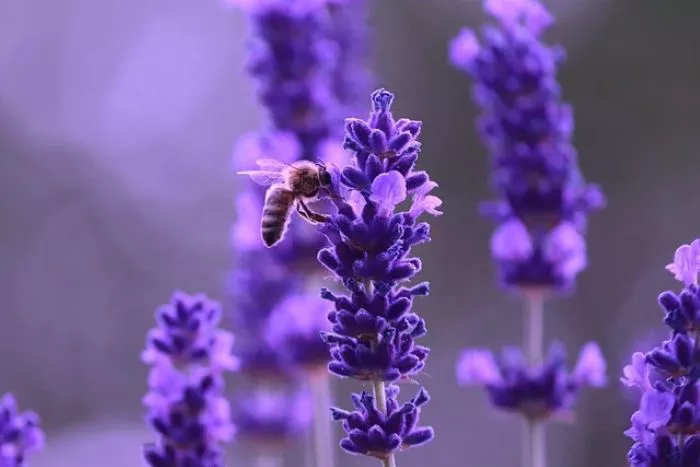Lavender is well-known for its beautiful flowers and soothing fragrance. It is commonly used in aromatherapy, cosmetics, and home decor. However, many people wonder if lavender flowers can be eaten. This article explores the culinary uses of lavender, its health benefits, and important considerations for consuming lavender flowers.
Introduction to Lavender
Lavender belongs to the mint family and is native to the Mediterranean region. The most common species used for culinary purposes is English lavender (Lavandula angustifolia). This variety is prized for its sweet, floral flavor and aromatic qualities. Lavender flowers are often used in cooking, baking, and beverages. They can add a unique flavor profile to various dishes.
Culinary Uses of Lavender Flowers
Lavender flowers can be used in a variety of culinary applications. They are often included in recipes for both sweet and savory dishes. Here are some common ways to use lavender in cooking.
Baking: Lavender can be added to baked goods such as cookies, cakes, and scones. A small amount of dried lavender can enhance the flavor of these treats.
Herbal Teas: Lavender flowers can be steeped in hot water to make a soothing herbal tea. The tea is known for its calming properties and pleasant aroma.
Savory Dishes: Lavender can also be used in savory dishes. It pairs well with roasted meats, vegetables, and sauces. A pinch of dried lavender can add a unique flavor to marinades and dressings.
Infused Oils and Vinegars: Lavender can be infused into oils and vinegars for use in salad dressings and marinades. This adds a floral note to the dishes.
Lavender Sugar: Mixing dried lavender with sugar creates lavender sugar, which can be used to sweeten teas, desserts, and baked goods.
Health Benefits of Lavender
In addition to its culinary uses, lavender has several health benefits. These benefits make it a popular choice in herbal remedies and natural products. Here are some potential health benefits associated with lavender:
Calming Effects: Lavender is widely recognized for its calming properties. Consuming lavender tea may help reduce anxiety and promote relaxation.
Digestive Aid: Lavender has been traditionally used to aid digestion. It may help alleviate symptoms of indigestion and bloating.
Antioxidant Properties: Lavender contains antioxidants that can help protect the body from oxidative stress. This may contribute to overall health and well-being.
Anti-inflammatory Effects: Some studies suggest that lavender may have anti-inflammatory properties. This can be beneficial for reducing inflammation in the body.
Considerations When Eating Lavender Flowers
While lavender flowers are generally safe to eat, there are a few important considerations to keep in mind.
Use Culinary Lavender: Not all lavender varieties are suitable for consumption. Always use culinary-grade lavender, such as English lavender. Other varieties may have been treated with pesticides or chemicals that are not safe for ingestion.
Moderation is Key: Lavender has a strong flavor. It is important to use it in moderation. Too much lavender can lead to an overpowering taste and may cause digestive discomfort in some individuals.
Allergies and Sensitivities: Some people may be allergic or sensitive to lavender. If you are trying lavender for the first time, start with a small amount to see how your body reacts.
Consult a Healthcare Professional: If you are pregnant, nursing, or taking medications, it is advisable to consult a healthcare professional before consuming lavender. This ensures that it will not interfere with any medications or conditions.
How to Use Lavender in Cooking
If you decide to incorporate lavender into your cooking, here are some tips to get started.
Choose Fresh or Dried Lavender: Both fresh and dried lavender can be used in cooking. Fresh lavender has a more delicate flavor, while dried lavender has a more concentrated taste.
Prepare the Flowers: If using fresh lavender, rinse the flowers gently to remove any dirt or insects. For dried lavender, ensure that it is culinary-grade and free from additives.
Experiment with Recipes: Start with simple recipes that include lavender. For example, try adding a teaspoon of dried lavender to a batch of cookies or steeping fresh lavender in hot water for tea.
Pair with Complementary Flavors: Lavender pairs well with flavors such as lemon, honey, and vanilla. Consider combining lavender with these ingredients to enhance your dishes.
Conclusion
Lavender flowers are not only beautiful but also edible. They can be used in a variety of culinary applications, from baking to herbal teas. Lavender offers potential health benefits, including calming effects and digestive support. However, it is important to use culinary-grade lavender and consume it in moderation. By following these guidelines, you can safely enjoy the unique flavor of lavender flowers in your cooking. Whether you are adding lavender to a dessert or enjoying a soothing cup of lavender tea, this delightful herb can enhance your culinary experience.


